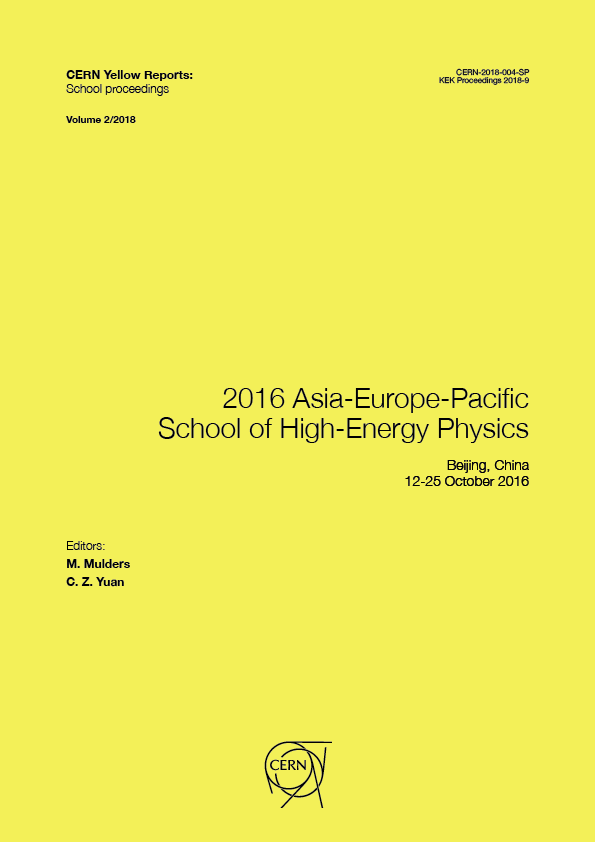Quarkonium physics: NRQCD factorization formula for J/ψ → e + e −
DOI:
https://doi.org/10.23730/CYRSP-2018-002.69Keywords:
NRQCD factorization formula, short-distance coefficient, long-distance NRQCD matrix elements, matchingAbstract
In this lecture, we briefly review the nonrelativistic QCD (NRQCD) factorization approach to describe the quarkonium production and decay. In the NRQCD factorization formula, the long-distance nature of a heavy quarkonium is factorized into the NRQCD long-distance matrix elements (LDMEs) and a physical measurable is expressed as a linear combination of the LDMEs. If we apply the perturbation theory to enhance the theoretical accuracies in the short-distance contributions there is no way to avoid non-analytic Coulomb divergences in the static limit of the heavy quark and infrared divergences. A systematic procedure to isolate such long-distance contributions out of the correction terms in the short-distance coefficients is called matching. As a heuristic example of finding the NRQCD factorization formula for a specific process, we demonstrate the matching procedure of determining the short-distance coefficients involving the leptonic decay of the $S$-wave spin-triplet state.
Downloads
Published
Issue
Section
License
Authors who publish with this publication agree to the following terms:
- CERN retains copyright and publishes the work licensed under the Creative Commons Attribution License 4.0 that allows others to share the work with an acknowledgement of the work's authorship and initial publication in this series.
- Authors are able to enter into separate, additional contractual arrangements for distribution of the published version of the work (e.g., post it to an institutional repository or publish it in a book), with an acknowledgement of its initial publication in this series.
- Authors are permitted and encouraged to post their work online (e.g., in institutional repositories or on their website) prior to and during the submission process, as it can lead to productive exchanges, as well as earlier and greater citation of published work (See The Effect of Open Access).

